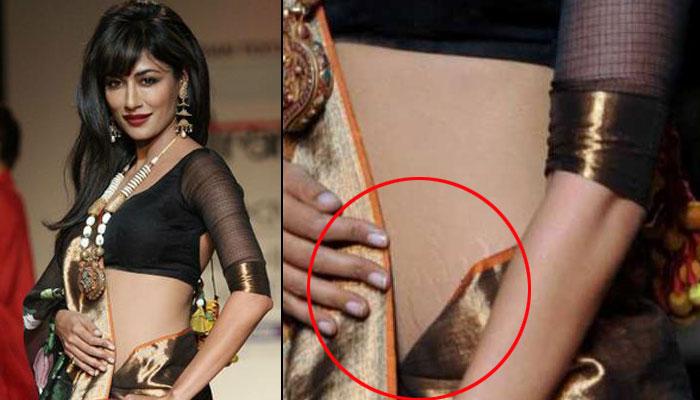Worried About Stretch Marks? Here's What Dermatologists Say About Treating Stretch Marks

As a dermatologist, I meet patients on a regular basis whose stretch marks cause them undue distress.
Many do not understand why they have occurred, and others just simply want to get rid of them. For such patients and all of you out there who are unhappy with these indelible marks on your skin, read on.
Recommended Read: 6 Common Foods That Can Help You Get Rid Of Stretch Marks Forever
What are stretch marks and why do they occur?

Stretch marks, otherwise known as striae, are pink, reddish-brown, purple or brown marks that appear on the body after any sudden weight or size changes. They are usually the result of rapid stretching of the skin. Due to this trauma, the structurally supporting elastic layer of the skin known as the dermis tears instead of stretching to accommodate the change.

Striae can be caused by extreme weight changes and may be influenced by hormonal changes associated with puberty, pregnancy, bodybuilding or hormone replacement therapy. Both men and women can get stretch marks on several areas of their bodies, including the abdominal area, thighs, hips, breasts, upper arms or lower back.
How to prevent stretch marks?
#1. Diet

You should maintain sufficient levels of water in the body to avert any problems with dry skin. Hydrated skin helps provide elasticity to the epidermis, helping you reduce your risk of striae. Furthermore, you should make sure you eat plenty of fruits and vegetables to ensure you get all the vitamins you need. These vitamins can help endow your skin with optimum elasticity and at the same time provide nutrients for improving your health. Fresh fruit, vegetables, almonds, fish and eggs are some example of vitamin-rich food items.
Continue reading below
Also Read: The Crazy Trend Of Dip Powder Nails Is Taking Over Gel And Acrylic Manicure
#2. Moisturise

Many studies have shown that consistent moisturising helps prevent stretch marks. This topical hydration will help improve the elasticity of your skin while helping promote the production of collagen and elastin, the stretching and supportive fibres in the dermis.
#3. Gotu kola

Studies show that Gotu kola (Centella Asiatica) can help. Skin creams containing the natural herb may help get rid of stretch marks and cellulite. Gotu kola is an Ayurvedic herb with exceptional healing qualities for scars and stretch marks. Additionally, studies have shown that creams containing Vitamin E and hyaluronic acid can also help prevent the formation of striae. Traditionally, cocoa butter has been used around the world, but no study has proven that it actually works to prevent those pesky marks.
You May Like: These 5 Vitamins In Your Usual Diet Guarantee You A Perfectly Radiant Skin
How to treat stretch marks?
#1. Vitamin A derivatives

Topically applying Retinyl Palmitate, Retinol or Tretinoin, all derivatives of vitamin A, helps to reduce the appearance of stretch marks. These actives are most effective on new stretch marks that are no more than six weeks old and are still red. Tretinoin works by increasing collagen synthesis to rebuild the dermis and by exfoliating the older skin, which causes the colour of stretch marks to fade into the surrounding skin.
#2. Alpha-hydroxy acids

Image Courtesy: YouTube
Alpha-hydroxy acids are also quite effective for improving the appearance of stretch marks. Alpha-hydroxy acids are natural ingredients derived from sugar or milk. They are commonly used for treating discolouration of the skin and also more effective used in higher concentrations in chemical peels. Alpha-hydroxy acids cause exfoliation, which can help fade stretch marks.
#3. Microdermabrasion

This gentle exfoliation uses rough grains to buff away the top layer of the skin. This treatment will remove the epidermis, causing the stretch marks to appear lighter. Also, by eroding the surface, treatment creams will be better able to penetrate into the dermis, allowing better collagen synthesis. However, numerous treatment sessions are needed for the better results.
#4. Fractional laser resurfacing

This recently emerging treatment for improving stretch marks has been shown to be quite effective with quite promising results. This treatment acts by creating microscopic wounds in the skin, forcing it to repair itself and synthesize new collagen. The laser energy can be seen as “kick-starting” a natural healing process that helps to stimulate fresh, healthy tissue, resulting in smoother skin.
Recommended Read: Homemade Exfoliating Scrubs That Are More Effective Than Scrubs Sold At Beauty Stores
So, follow this dermatologist’s guide to help treat those stretch marks. And, always take the advice of a dermatologist to ensure that you get the best results from your stretch mark treatment.
advertisement
advertisement
advertisement
.jpg)








